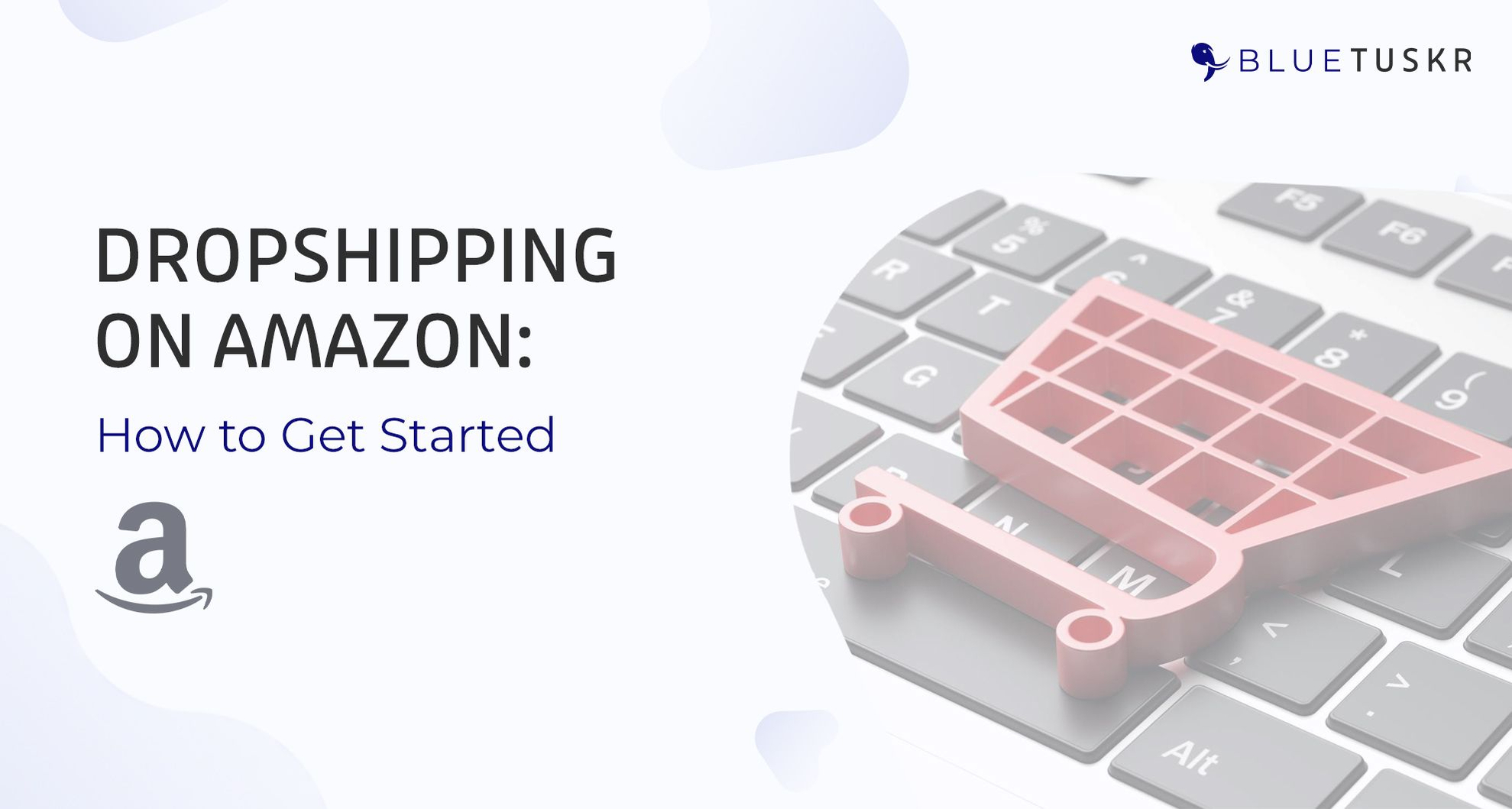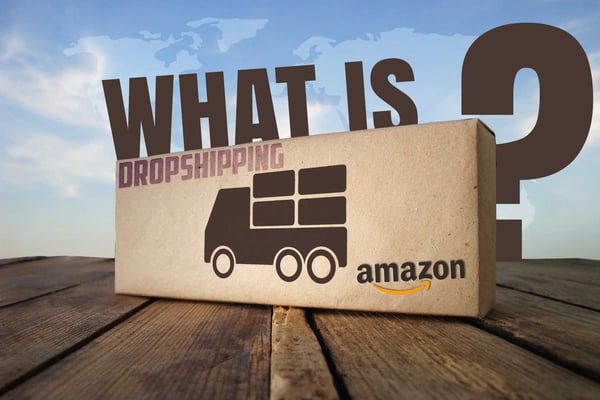
Dropshipping on Amazon: How to Get Started
In 1994, Jeff Bezos incorporated Amazon.com. Once just an online bookstore, the platform quickly dove into other niches. Today, you’d be hard-pressed to identify a product the retail giant doesn’t carry, especially with dropshipping on Amazon being so popular.
Calling Amazon an e-commerce leader feels like a massive understatement. Its reputation for customer service alone separates it from many other online retailers, let alone its gigantic inventory.
That’s why dropshipping on Amazon can be such a smart move. You can connect to the company’s reputation. Plus, there are many other benefits you could experience. If you are wondering how you can launch an Amazon dropshipping business, and why it can be a great choice, here’s what you need to know.

What Dropshipping Is and How It Works
First, it’s important to understand what dropshipping actually entails. As a dropshipper, you aren’t responsible for carrying any inventory or shipping the items. Instead, the manufacturer carries that burden. All you have to do is set a price point and sell, sell, sell.
As a result, dropshippers take on little (if any) direct risks. You don’t have to worry about handling the product on any level, and the business itself is simpler to run than most others that involve physical items. Plus, your costs remain low, as you don’t have to maintain a warehouse full of stuff when you sell.
What a dropshipper needs to bring to the table is some e-commerce marketing chops, strong administrative skills, and a stellar customer service-oriented mindset.
E-commerce marketing allows you to connect with potential buyers. You may need to leverage social media to find the right consumer audience, make use of email marketing software to advertise high-priority items, and pump up a listing's SEO to drive sales, for example.
On the administrative end, processing orders is a big part of the equation. You’ll also have to handle taxes responsibilities, monitor expenses, and take care of other business-oriented tasks. Testing product options to see what does or doesn’t sell is also a critical task, ensuring you can focus on the right SKUs.
Customer service is always a biggie in the world of e-commerce. Along with answering questions to move prospective buyers through the sales funnel, you also need to stay connected after the sale. That way, you can cultivate lasting relationships, increasing the odds that a shopper will become a repeat buyer.
Why Dropshipping on Amazon is a Smart Move
Several factors drive Amazon’s popularity. The company seemingly has nearly every product under the sun. There are millions upon millions of products available through the site, covering categories like electronics, gourmet foods, baby gear, clothing, jewelry, media, and much more.
Additionally, Amazon’s prices are perceived as highly competitive. That causes many shoppers to head to the retailer first when they need an item.
Further, Amazon fundamentally altered how consumers view home deliveries. Many other retailers can’t offer the speed you can get through Amazon, particularly in areas with same-day options. In today’s “now” culture, that’s a major driving force behind why people choose the e-commerce leader.
That’s why so many consumers flock the Amazon. In the United States in a single month, 150.6 million shoppers headed to the retailer through Amazon mobile app alone. Plus, there are 112 Amazon Prime users, 20 percent of whom head to Amazon a few times a week, showing just how dedicated consumers are to the tech behemoth.
Plus, consumers trust Amazon, with 89 percent of buyers admitting that they are more likely to spend their hard-earned money there than on any other e-commerce site. By dropshipping on Amazon, you can potentially reach those shoppers. You’ll be on one of the most popular platforms on the planet.
Finally, when you dropship on Amazon, you don’t have to maintain your own e-commerce store. You can rely on Amazon completely in that regard.

How to Start Dropshipping on Amazon
Learn Amazon’s Rules
First and foremost, you need to understand Amazon’s dropshipping rules. You are allowed to dropship on the platform, as long as you remain on the right side of various requirements. To be compliant, you have to:
- Be listed as the seller of record on the products
- List yourself as the seller on packing slips and other provided product information
- Remove any packaging, invoice, slips, or other items that identify you as a third-party dropshipper
- Manage the acceptance and processing of customer returns
- Comply with all of the terms set out in the Amazon seller agreement as well as any applicable Amazon policies

Set Up Your Amazon Seller Account
You can’t sell on Amazon without an Amazon seller account. The process is fairly simple and can all be handled at Amazon Seller Central.
When creating your account, you’ll have to provide personal information. Along with your business name and contact details, you’ll need to provide a valid credit card and relevant tax-related information.
Along the way, you’ll have to choose to sign up on an Individual or Profesional plan. Each has its own fee structure, so you’ll need to examine how many units you believe you’ll sell a month to figure out which is right for you.
Choose Your Product Category
When you decide to start dropshipping on Amazon, your product category determines whether you’ll need Amazon’s approval to get started. Some niches are fairly wide open, while others have specific requirements you need to meet before you can get started.
There are about 20 categories that don’t have pre-approval requirements. For example, Baby Products, Computer & Video Games, Pet Supplies, and Tools & Hardware are all fair game.
However, Beauty, Clothing & Accessories, Grocery & Gourmet Goods, Jewelry, Wine, and several others have requirements you’ll need to meet. You can review them in advance, allowing you to see if you want to jump through the required hoops to head in that direction.
Set Up Your Seller Profile
With your categories in place, it’s time to create your Seller Profile. You’ll configure various settings and provide critical kinds of information that potential buyers will see, so you want to make sure you take a comprehensive and sales-oriented approach.
Choose a Supplier
If you’re dropshipping on Amazon, you’ll need a product supplier. That company will be the one sending out items your customer orders, so you need to make sure you choose wisely.
Finding a legitimate dropshipping supplier can take time. There are scams around, so you need to research a company thoroughly before you commit.
Additionally, you need to make sure the products are up to snuff. Poor product quality will fall back on you, not them. You’re the one who would have to deal with dissatisfied customers, so vet the product completely before you settle on the supplier.
Ideally, you want to choose a dropship supplier that has:
- High-quality products (with warranties, if possible)
- Low order fees
- Reasonable payment terms
- Cost transparency (no surprise hidden fees)
- Great customer service
- Detailed product listings
- Accurate inventory data feeds
Have a Small Trial Run
Once you have a dropship supplier, you want to start with a small order. It can serve as a trial run, allowing you to gauge critical details like shipping times and whether what shoppers receive actually matches the product you selected.
You’ll create product listings and market them to consumers. As purchases begin rolling in, monitor buyer responses for insights into their experience.
In some cases, this could also be the stage where you join Amazon’s Fulfilled by Amazon (FBA) program. With this, Amazon would be the one who handles the shipping to customers. Your order from the supplier would head to an Amazon warehouse, which could make the items eligible for Prime Shipping.
However, the FBA approach does come with some additional costs. You have to pay Amazon to play middleman, but it can be worth it if you want to reach Prime shoppers and secure some additional support from the retail giant.
.jpg?width=600&name=Copy-of-Blog-Post-Pictures-(3).jpg)
Scale Up, Stay Small, or Re-evaluate
Depending on the success of your trial run, you can scale up, stay small, or re-evaluate your approach. Precisely how that plays out will vary depending on your category, chosen supplier, overall success rate, and similar details.
Ultimately, your goal should be to continuously evaluate your dropshipping on Amazon business. For example, if you’re scaling up and didn’t join the FBA program initially, you may want to regularly consider whether making a change is right for you. If products aren’t doing as well, you may need to pivot to a new product or rethink your e-commerce marketing.
Should something change about the quality of the items, then exploring new dropship suppliers might be a necessity. Even if a supplier starts out strong, it’s always possible that the situation can change.
Dropshipping on Amazon can be a challenge. But with some time, attention, and diligence, it’s possible to have dropshipper success. Interested in Amazon listing optimization services? Contact our team at Bluetuskr, an e-commerce marketing agency.
Connect With Us
Recent Post

.png)







Tell us what you think!